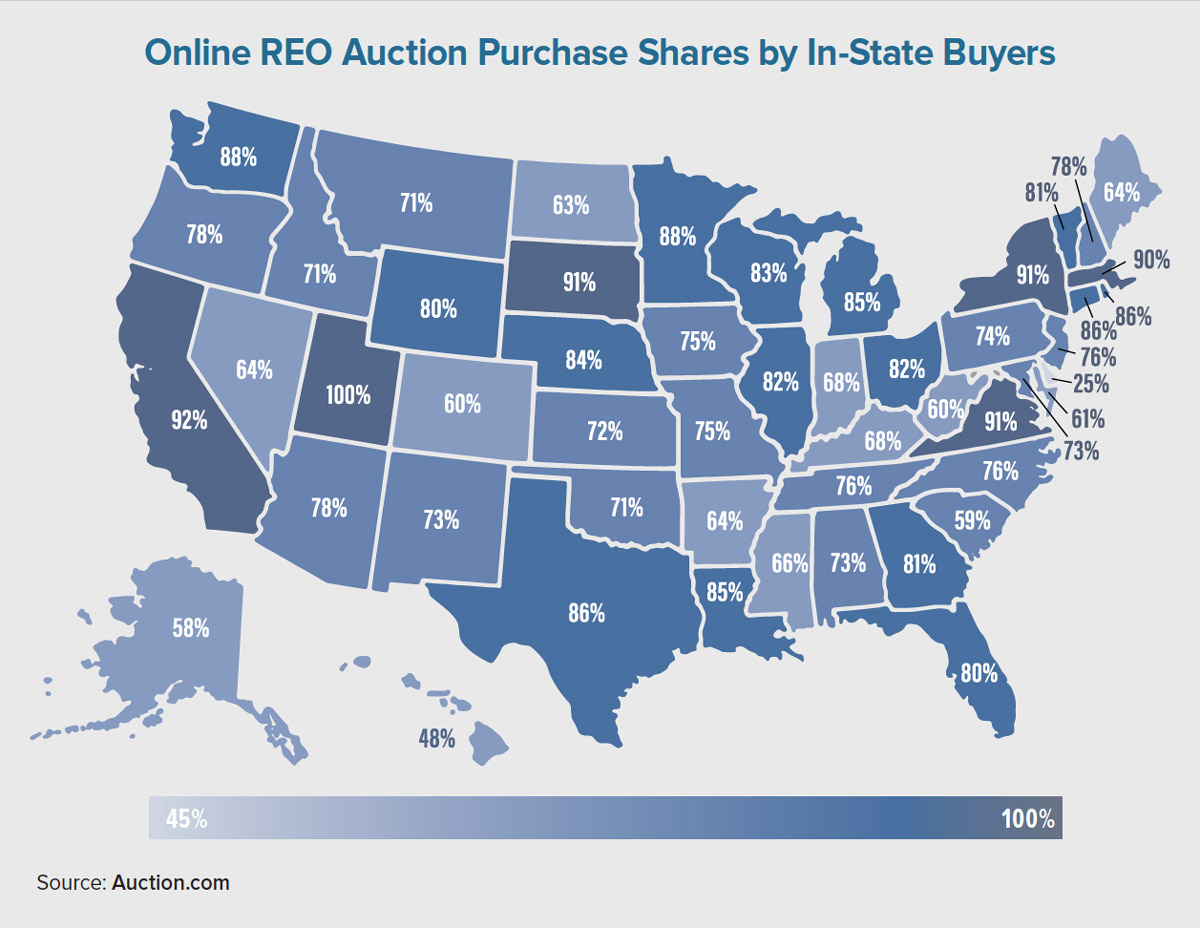Real estate investors often avoid the extra risk involved with flipping homes from afar. They tend to stay within 50 to 100 miles of their home when purchasing, rehabilitating and reselling an investment property.
The majority of distressed-property buyers fall into this category, according to an Auction.com survey conducted in February 2021. More than three in four respondents (78%) reported that the bulk of their investment-property purchases are within driving distance of their own homes.
Distressed properties such as foreclosures and real estate-owned (REO) homes typically require extensive rehab before they can be resold to retail buyers. They may have flood-related mold damage, for example, which may necessitate a rehab period of six months to a year. In the end, however, a new buyer usually winds up with a beautiful turnkey home and the investor profits — a win-win situation.
Local investors not only represent the majority of distressed-property buyers — they also account for the majority of distressed homes purchased. This is an important distinction as it eliminates the possibility that a few large out-of-state buyers are gobbling up massive numbers of foreclosure and REO properties.
An analysis of more than 9,500 REO homes purchased online in 2020 via the Auction.com platform shows that 79% of these homes were purchased by in-state buyers. In 49 of 50 states, with Hawaii being the lone exception, more than half of all distressed properties were purchased by in-state buyers. And in 29 states (including Ohio, Illinois, New York, New Jersey and Michigan), the shares of in-state buyer purchases increased from 2019 to 2020.
Technological innovations are enabling online purchases of distressed real estate and empowering local investors who can now buy a house down the street as a hobby or as a break from their day job. These investors report satisfaction in being able to bid on and purchase homes from their comfort of their living room or while traveling. They are often repeat buyers.
An increasing share of local buyers often equates to better outcomes for these distressed properties. Anecdotally, local investors tend to take pride in the quality of their rehab efforts as they impact home values in their own neighborhoods. They seek to improve homes as if they or a family member are going to live there, rather than cutting corners. Additionally, the proliferation of local buyers bodes well for the larger retail housing market. When compared to lender-based REO departments that manage the renovation and resale of distressed homes from a distance, local investors complete higher-quality renovations in less time while more effectively increasing local homeownership rates.
More than two-thirds of local investors budget at least $27,000 for rehab and holding costs, and more than one-third budget at least $40,000, according to Auction.com’s February 2021 buyer survey. This budget range starts well above the high end of what lenders typically allocate to foreclosed-property expenses. These REO expenses ranged from $10,000 to $15,000 per property, depending on the lender and type of mortgage involved, according to an analysis of recent public filings with Fannie Mae and the Federal Housing Administration.
Even though they’re spending more on rehab costs, investors resell these renovated foreclosure properties in an average of 201 days, two months faster than the 268-day average of bank REO departments. That’s according to a post-sale analysis of more than 70,000 properties brought to foreclosure auction through the Auction.com platform in the 12-month period ending in March 2020.
This same post-sale analysis also shows that investors resold 71% of rehabbed foreclosures to owner-occupants while bank REO departments did so at a 45% clip. This data demonstrates that local investors typically produce better outcomes for distressed properties and their surrounding neighborhoods. ●
Author
-

Daren Blomquist is vice president of market economics at Auction.com. In this role, Blomquist analyzes and forecasts complex macroeconomic and microeconomic data trends to provide value to both buyers and sellers using the platform. Blomquist has been cited by thousands of media outlets nationwide, including major news networks, The Wall Street Journal, The New York Times and USA Today. Prior to Auction.com, Blomquist worked at Attom Data Solutions.





